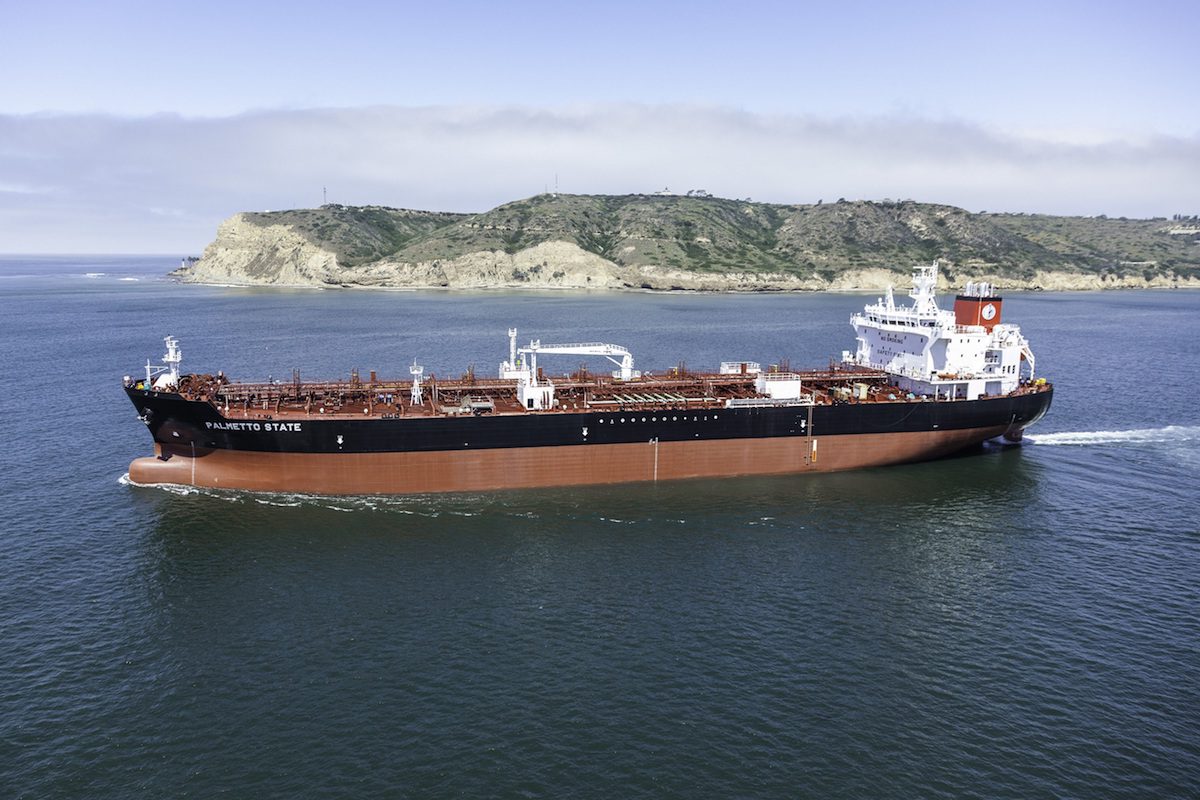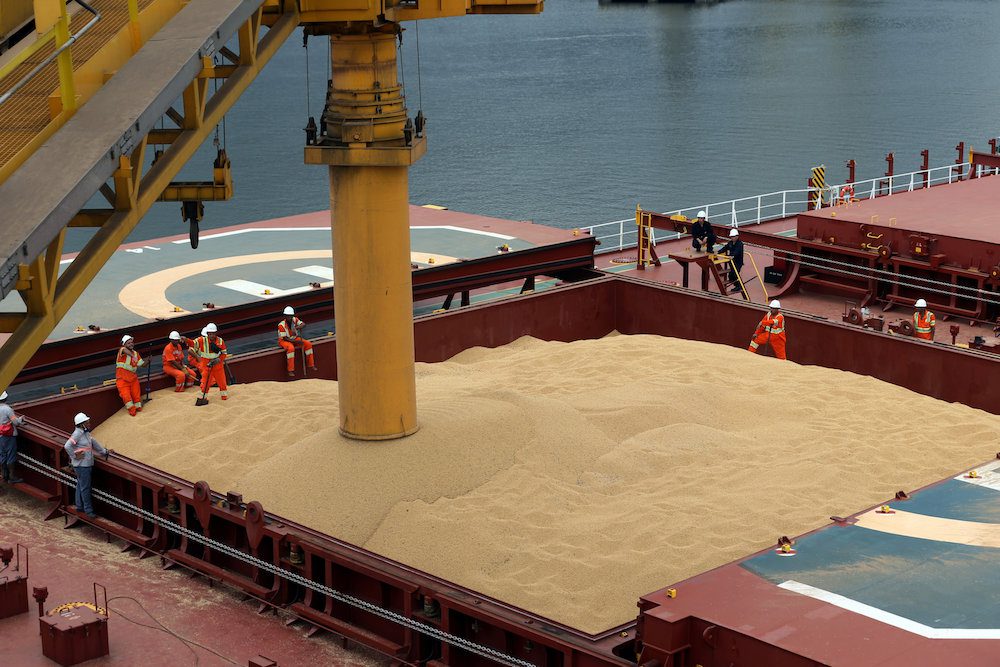The MT Palmetto State, picture here, was delivered to Kinder Morgan-susidiary American Petroleum Tankers in June. APT’s fleet now consists of thirteen Jones Act-qualified product tankers, plus it has another three on order. Photo: General Dynamics NASSCO
By Laura Blewitt (Bloomberg) — The hottest trade in the U.S. gasoline market is starting to cool.
As America’s U.S. Gulf Coast refining complex seeks more attractive destinations for its rising production of motor fuels, marketers have found that shipping gasoline to the Atlantic Coast on the Colonial Pipeline might not be the most profitable anymore. The operator of the largest U.S. gasoline pipeline told shippers Thursday that demand fell below its 1.3 million-barrel-a-day Line 1 capacity, indicating a sea change in physical gasoline market dynamics.
“The surprise isn’t that it has happened but rather that it took this long,” said Robert Campbell, head of oil-products research at Energy Aspects Ltd., by email from London. “The East Coast in general is long and U.S. Gulf Coast refiners have alternative markets that offer better returns.”
One such replacement includes using the growing fleet of U.S.-flagged vessels. The nearly 100-year-old Jones Act mandates that only ships built domestically can transport goods between two U.S. ports. Companies like the pipeline and terminal operator Kinder Morgan Inc. are growing their fleets of the ships to move supplies from Gulf Coast refineries to driving markets in Florida and other parts of the Southeast.
The 60-year-old pipeline showed its age and vulnerability last year after two explosions, one of them fatal, shut Line 1 and cut off a quarter of the gasoline supplies used by East Coast motorists. When the pipeline first shut in September 2016, a Jones Act tanker helped relieve dwindling supplies in storage tanks in Georgia and South Carolina. Colonial suffered another leak in January on a branching pipe from its mainline that supplies gasoline to Nashville, Tennessee.
Selling Line Space
Just four years ago, gasoline traders realized that they could capitalize on contracts to ship fuels on Colonial’s line, and a spot market was born. Just a year later in December 2014, buyers were clamoring to purchase space for as much as 29 cents a gallon, according to Argus Media Ltd. pricing data analyzed by Bloomberg. The traders who possessed shipper history could basically make money doing nothing.
Colonial tried to change the practice by altering its tariff with the Federal Energy Regulatory Commission in November 2015. Its customers weren’t having it. Companies from Costco Wholesale Corp. to American Airlines Group Inc. protested the alteration, and FERC rejected the proposal.
“History is being traded as a commodity. So now we have shippers that are looking to ship only to capture the commodity value,” Buster Brown, Colonial’s director of scheduling said in a March 2016 FERC conference, calling the line space trade practice “unfair” to new shippers.
Not long after that conference, the trade began to sour and values went negative. Traders started paying their counterparts to use their space.
“Line space values have been negative for a long time but no one has been willing to give up their shipper history until now,” Campbell said.
Colonial continues to monitor its shippers’ behaviors “very closely,” said Malesia Dunn, a spokeswoman for Colonial.
Changing Economics
Stronger prices at the origin point have helped close the arbitrage to ship gasoline from Houston to the Northeast. Conventional 87-octane gasoline in the U.S. Gulf region is trading above the strongest seasonal level in 10 years versus futures on the New York Mercantile Exchange, data compiled by Bloomberg show.
It’s easy to see why Gulf Coast prices are on the rise. U.S. refiners are picking up the slack in supplies left by their Latin American counterparts, so even with oil processing volumes reaching a record-high 17.7 million barrels a day last month, demand from abroad is propping up the domestic marketplace.
But the Atlantic Coast’s primary trading hub in New York Harbor is not running low on supplies, even with Latin American buyers absorbing the Gulf Coast’s production. Imports to the region have been so strong that at least 11 tankers have been diverted from the region since May.
“Although East Coast gasoline stocks have finally dipped below the five-year seasonal high, demand increases have not been enough to offset high production levels,” said Patricia Hemsworth, senior vice president at Paragon Global Markets. “All factors have led to the lack of movement from the Gulf Coast to New York.”
© 2017 Bloomberg L.P

 Join The Club
Join The Club











